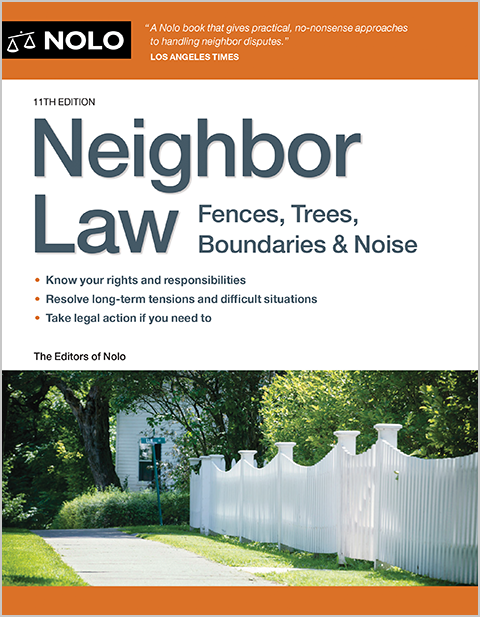Looking at whether local laws or regulations prohibit, or at least place restrictions on, building a front yard fence.
Owning a home sometimes puts you at the mercy of your neighbors aesthetic choices. Let's imagine that your neighbor has told you he's planning to build a fence in his front yard to keep kids and dogs out. In fact, it will be the only front yard fence on the whole street. Knowing your neighbor, you suspect he'll probably throw up an ugly chain link fence, too. Can you stop him?
One unsightly fence can definitely change the character of the neighborhood, though normally a homeowner would be within their rights to build one. Nevertheless, you'll want to do some research regarding any limitations, as described below.
Check Applicable Rules and Regulations
You might need to check several different resources regarding the legality of a fence, as follows.
Local Zoning Rules Regarding Fences
A good first step would be to take a look at your local jurisdiction's zoning ordinance (sometimes referred to as a "development code"). Although most locations allow fences in residential zones, you will want to review the code to confirm that front yard fences are in fact allowed in your neighborhood. If they are not, your neighbor might be required to halt his plans or even remove any fence he constructs and pay a fine.
Check Whether Your Property Is in a Historic District
Even if fences are allowed in your zone, if your property is located in a historic district, there could be additional regulations that apply. Historic districts often strictly require that any new construction (including fences and landscaping) be consistent with the historic nature of the neighborhood. If a proposed fence is not consistent with that historic character, it could be prohibited.
Check Local Fence Design Standards
Assuming front yard fences are an allowable use in your zone, your neighbor will still likely need to abide by local "design standards," which control the types of materials a fence be built with and how high a fence can be. For example, fences might need to be made out of wood, masonry, or metal, and be no taller than four feet.
Check Local Setback Requirements
Your local building regulations might also require setbacks, which control where a fence can be located (for example, 20 feet from the edge of the street). If front yard fences are permitted, you might not be able to stop the neighbor's fence altogether, but you might be able to remind the neighbor of certain standards to make sure it is not an eyesore (or at least as big an eyesore.)
It is also possible that, when your neighbor considers the cost of complying with the design standards, he will reconsider building the fence.
If the Property Is in a Planned Community, Check the CC&Rs
If you live in a subdivision governed by a homeowners' association, another document to review (if applicable) is the Declaration of Covenants, Conditions, and Restrictions (CC&Rs.) It's possible the CC&Rs prohibit fences, or at least restrict where fences can be built. CC&Rs often have stricter design standards than zoning ordinances and can be a helpful tool when objecting to a neighbor's new fence.
Get Help From the Local Planning Department
Zoning ordinances and CC&Rs are not always crystal clear. Do not be afraid to ask for assistance from the local planning department (although it might not be able to help with CC&Rs) or your own land use attorney. If you seek help from a local planning department, be aware that, while staff there can be helpful, they do not represent you and will not act on your behalf.
Following Up on With Your Neighbor About the Fence
How you proceed in trying to stop your neighbor's fence will likely depend on what you discover in the zoning ordinance and CC&Rs. For instance, if you find that front yard fences are not permitted in your neighborhood because it is in a historic district, you might want to alert your neighbor to this fact in case he is unaware. If he goes ahead and builds the fence, you might have to file a complaint with your local code enforcement department.
Once code enforcement receives your complaint, it will investigate whether the fence complies with the applicable zoning ordinance and building code. If code enforcement confirms the fence is unlawful, your neighbor will likely be ordered to remove it or risk being fined.
The process for dealing with a violation of the CC&Rs will be different. In addition to CC&Rs, your subdivision might also have bylaws or rules and regulations that describe the process you will need to comply with to oppose the fence. Review those to determine what steps you need to take to stop construction of a fence that violates the CC&Rs. The subdivision might have a property manager who helps with complaints, or you might need to alert the homeowners' association board of the violation.
If, after reviewing the zoning ordinance and CC&Rs, you determine front yard fences are permitted, you are not necessarily out of luck. One option is to have a conversation with your neighbor about the potential impact the fence will have on the neighborhood. It is possible your neighbor is so frustrated with, say, various irresponsible dog owners leaving poop in his front yard that he just wants to keep the dogs out, without considering the impact it will have on others in the neighborhood. He might not have thought about alternatives, such as small signs asking owners to keep their dogs of his lawn or subtle landscaping that discourages entry into the front yard.
If your neighbor is unresponsive to your attempts to communicate on the issue, mediation could be a good option. Mediation is a relatively informal forum in which two or more parties, with the assistance of a neutral third party, try to resolve disputes. It can be particularly helpful with neighbor disputes. Through mediation, you and your neighbor will try to get to the underlying issues and find a resolution that works for everyone. Whether through mediation or informal conversation, even if your neighbor is insistent that a fence be built, perhaps you will be able to help him design the fence in a way that limits the aesthetic impact.
If you believe the fence is not permitted, and your attempts to resolve the dispute informally or through code enforcement are not successful, you might need to file a lawsuit. It might be possible to get an injunction from a court ordering the fence be removed. Before filing a lawsuit, though, talk to an attorney to make sure you understand the cost and risk associated with such a move.
Talk to a Lawyer
Need a lawyer? Start here.
How it Works
- Briefly tell us about your case
- Provide your contact information
- Choose attorneys to contact you
- Briefly tell us about your case
- Provide your contact information
- Choose attorneys to contact you


